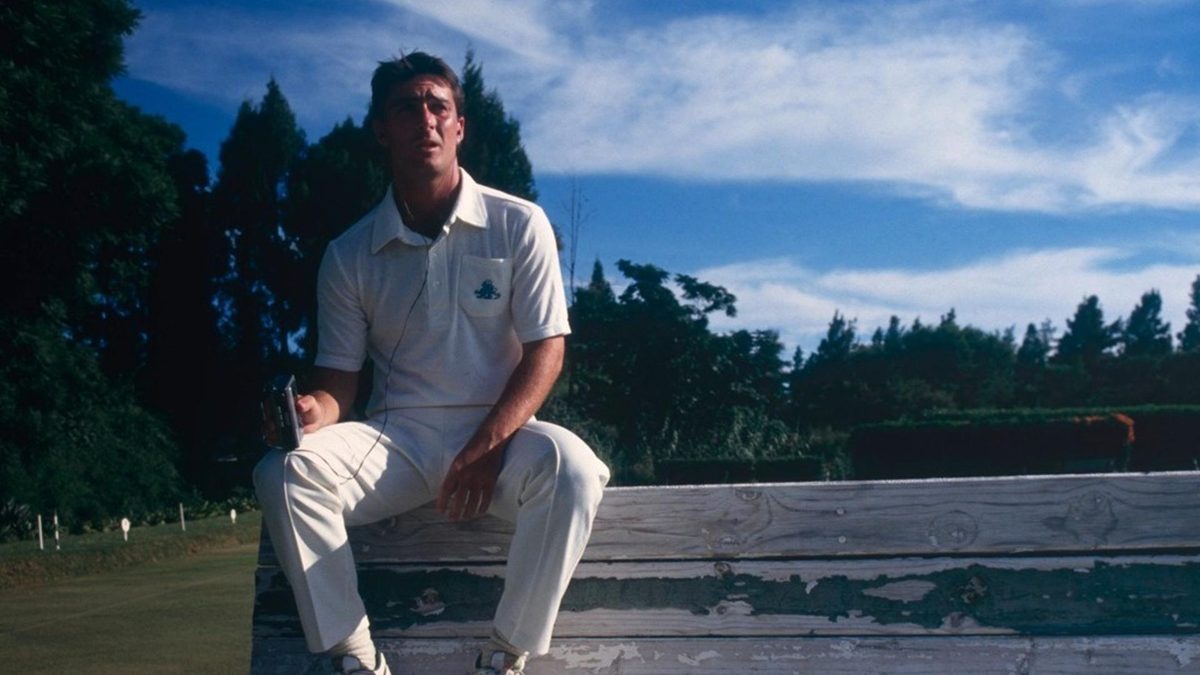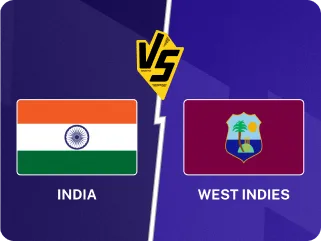
Graham Thorpe died on August 4, 2024, aged 55. From 100 Test matches between 1993 and 2005, he scored 6,744 runs with 16 hundreds. He also played 82 ODIs. He was remembered in the 2025 edition of the Wisden Almanack.
THORPE, GRAHAM PAUL, MBE, died on August 4, aged 55, after being struck by a train at Esher station in Surrey. His family confirmed he had taken his own life.
Whether manipulating Asian spinners, or tackling Australia’s quicks, Thorpe was England’s most accomplished all-round batsman in an era of mixed fortunes for the Test team. Wasim Akram called him the “best left-handed batter I bowled to” (and the candidates included Brian Lara). Thorpe’s friend and former captain Nasser Hussain called him “the little genius”. Everyone marvelled at his adaptability. He began his Test career with a century on debut against Australia at Trent Bridge in 1993, and ended it – to his chagrin – shortly before the 2005 Ashes. In all, he scored 16 hundreds, averaged 44, and routinely made runs when most needed. He later moved into coaching, and two of his protégés, Joe Root and Ben Stokes, were pallbearers at his funeral in Southwark. Root described him as a “rock star”, Stokes as a “great man, always making everyone laugh and smile”. Mike Atherton, another of his former captains, said simply: “We adored him.”
Running parallel to Thorpe’s on-field success, and sometimes impinging on it, was a troubled private life dominated by the breakdown of his first marriage, to Nicky, in 2001. His 2005 autobiography, Rising from the Ashes, was a difficult read, sparing few details of his descent into drink and depression. “I don’t think I’m a typical professional sportsman,” he wrote. “I wear my heart on my sleeve more than most. I’m emotional and sensitive, though sport has taught me when to be tough.” Thorpe later found happiness with Amanda, his second wife, with whom he had a daughter, as well as a stepdaughter. But the pain of his estrangement from his two children with Nicky never quite healed.
For a while, his problems became public property. Thorpe had flown home early from a tour of India in 2001/02 in a bid to save his marriage. Later that winter, in New Zealand, spectators taunted him about his wife’s new relationship with a tennis coach. He shut out the barrackers, and in Christchurch scored a double-century which he described as “pure escapism”. But he returned home to find she had moved out, and he spent the summer in turmoil. Against India at Lord’s, he was on antidepressants, which triggered hallucinations; he scored four and one, and dropped Sachin Tendulkar. He did later hold the winning catch, but was unmoved: “I simply turned and walked off.” No team-mate, thought Atherton, so obviously brought his off-field troubles out to the middle. Hussain agreed: “Thorpey had to be happy away from the game, both in his body and his life.”
His breakdown, which led to his pulling out of the 2002/03 Ashes tour after assuring England coach Duncan Fletcher he was ready to travel, lent pathos to his subsequent return, against South Africa at The Oval at the end of the following summer. Michael Vaughan, who had replaced Hussain as captain, remembers: “Graham was one of the first conversations I had with Duncan. I always felt that, if we wanted to be a high-level team, we needed the best players. We also needed his character.” His recall was facilitated by the absence of Hussain, who had broken a toe. But Thorpe – though now settled with Amanda – was consumed by self-doubt. Could he still perform at the highest level? The answer was resounding, and it brought his home ground, where in all he spent 18 summers with Surrey, to its feet: a superb 124, full of the old cuts and pulls, as England racked up 600 and thrillingly squared the series. He regarded it as his best innings. “Maybe I wasn’t such a bad person after all,” he concluded. He certainly wasn’t a bad batsman: from the start of his Test comeback until the end of his career, he averaged 56 – the senior pro Vaughan craved.
Throughout, Thorpe did things his way. He said little at team meetings, but had an eye for a struggling colleague, who might later receive a sympathetic knock on his hotel-room door. “He led with his actions, or his words away from the team environment – in your room or over a beer,” says Hussain. “He’d have made a very fine captain.” In fact, Thorpe did lead England, for three one-day internationals in Sri Lanka in March 2001, but he didn’t enjoy the limelight. And the authorities despaired at his anti-Establishment streak. He, Hussain and Mark Ramprakash – their careers on similar trajectories – were dubbed “the Brat Pack”, and Thorpe was always suspicious of convention. He had refused to attend a pre-World Cup function in Canterbury in 1999, costing him £1,000 and – very nearly – his place in the team. When he turned up with team-mates for a do on billionaire Paul Getty’s yacht in the Caribbean not wearing the right attire, the host asked coach David Lloyd: “He’s not part of your team, then?” In a deft move, England manager Bob Bennett placed Thorpe – recently fined for wearing an official cap to breakfast – on the team’s dress-code committee. Later, Fletcher co-opted him on to the general-management team. For all his occasional awkwardness, Thorpe appreciated the gestures.
He insisted his sartorial lapses stemmed from “disorganisation”, not “subversion”. But Hussain said: “He didn’t suffer fools or authority gladly. It was two fingers up to them: I’ll just get my runs.” Some years earlier, Thorpe had fallen out with Surrey captain Ian Greig, an old-school disciplinarian; later, to Hussain’s bemusement, Mike Gatting asked at a selection meeting what he brought to the team other than runs. Thorpe called Gatting’s comment “mystifying and hurtful”. Rob Key, then a Test team-mate, said Thorpe was “our no-bullshit-ometer”.
The youngest of three brothers, he had been consumed by sport from the start. Aged eight, he was already playing for Wrecclesham Under-17, and by 13 was in the Firsts. He scored a century, and joined Farnham, his home club, in the Surrey Championship, hitting 90 on debut. In 1988, still a teenager, he was offered a contract by Surrey. He had also been a good footballer, representing England Schools Under-18 and having trials with Brentford. But his combativeness got him into trouble, and he gave up the sport when an opponent headbutted him shortly before he flew to Kenya and Zimbabwe with England A in 1989/90.
Thorpe’s Surrey debut had come in 1988. He batted at No.8 and bowled gentle away-swingers, claiming David Gower as his first wicket, and quickly adding Peter Willey. He was soon dropped, but returned in 1989 after Monte Lynch broke his leg; by June, he had worked his way up to No. 4, and was taking a century off Hampshire – and Malcolm Marshall – at Basingstoke.
The bowling fell away: he was to finish with 26 wickets, and a best of 4-40 against the touring Australians in 1993. It was, though, the summer that changed his life. Already a favourite of England coach Keith Fletcher, Thorpe was one of four debutants for the third Test at Trent Bridge, with Australia 2-0 up. The other three – Mark Ilott, Mark Lathwell and Martin McCague – would win ten caps between them. Thorpe scored a century in the second innings, the first England debutant to make a hundred since Frank Hayes, 20 years earlier. Wisden noted his “patent whipped hook”. Any clamour to recall Gower subsided.
There was a period when Thorpe seemed to specialise in innings bigger than cameos but too small for headlines: a pair of eighties against West Indies on his first tour, three successive counter-attacking seventies at home to South Africa, a trio of half-centuries in Australia in 1994/95. Finally, he added a second hundred, at Perth. Those innings helped ease his concerns that he couldn’t handle pace but, by the time England headed for New Zealand in 1996/97, he had converted only two of his 21 Test scores of 50 into hundreds; an average the wrong side of 40 suggested unfulfillment. (His 82 ODIs produced 21 fifties and no hundred.) A century in each of the first two Tests, at Auckland and Wellington, helped redress the ledger. Twenty-eight years later, the new Crowe-Thorpe Trophy, awarded to the winner of New Zealand-England Test series, was made partly from the bat he used to score those runs.
He followed up with 138 in the First Test against Australia at Edgbaston, and averaged 50 in that summer’s Ashes – enough to make him one of the Five Cricketers of the Year. But persistent back trouble contributed to a lean patch, including three successive ducks at home to South Africa in 1998, when he underwent surgery. Between the start of that summer and the end of the historic home win against West Indies two years later, he managed a lone half-century in 20 Test innings, in the only game he played on an Ashes tour, before leaving when his back flared up again. “It made him cumbersome and slow, and he lost a massive part of his game,” says Hussain. “It got him down.”
All was forgotten in Asia in 2000/01, when he enjoyed his best winter. At Lahore, he nurdled Pakistan’s spinners to distraction, reaching a six-hour century that contained a single four. He followed that with 79 in five and a half hours at Faisalabad, then marshalled the chase in Karachi, where England secured their first series win in Pakistan for 39 years. The image of him and Hussain, running arm in arm from the field in near darkness, showed Thorpe at one of the happiest moments of his career. Three months later, during a bad-tempered trip to Sri Lanka, his swift 46 broke the back of a tricky chase at Kandy, before a superb double of 113 and 32, both unbeaten, secured a 2-1 victory in Colombo. His skilful handling of Muttiah Muralitharan was at the heart of England’s win.
The scores kept coming: 138 against Pakistan at Old Trafford, the Christchurch double, 123 against Sri Lanka at Edgbaston, taming Murali again. But his home life was unbearable, and the 2002 Lord’s Test against India would be his last for over 13 months. When he returned, he was 34, and Vaughan had instilled a new fitness regime. Having satisfied himself that Thorpe’s head was in the right place, Vaughan told him to focus on scoring runs: “If we’re doing fitness work, just make sure you look like you’re doing something.” It was music to Thorpe’s ears, and he embarked with gusto on the final phase of his England career. In Sri Lanka that winter, Murali had perfected his doosra, removing Thorpe in five successive innings. But against the pace of Fidel Edwards and Tino Best in the Caribbean in the spring of 2004, Thorpe played one of his best innings: an unbeaten 119 at Bridgetown in a total of 226; the next-highest contribution was 20 extras. It ensured England’s first series win in the West Indies since 1967/68, and typified his talent. “I don’t ever remember him reading the situation wrong,” said Vaughan. “You could just sit back and trust him. He’d see off a spell, and counter-punch at the right time. And when he got in, you always felt he was going to dominate the game.” Atherton said: “The modern England team talk about soaking up pressure and putting it back on the bowlers – and he could do both. He scored runs in all conditions, against all bowlers, home and away.”
There were three more hundreds, two in the summer of 2004, when England won seven Tests out of seven, and a high-class 118 not out against Shaun Pollock, Makhaya Ntini and Dale Steyn at Durban. By now, he had turned to God, and read the Bible before going out to bat. He won his 100th cap against Bangladesh at Chester-le-Street in June 2005, but was cast aside for the Ashes, because England wanted to include both Ian Bell and Kevin Pietersen. Thorpe wrote that he was “desperate to play”, and had a series of injections in his back, though Vaughan remembers it differently: “His mountain was to achieve 100 caps, and he got there. He made it very clear his back was a problem, and he didn’t feel he was ever going to be able to play this expansive, aggressive game for five Tests on the trot against the Australian juggernaut. We wanted to go with a fresher set of minds – younger players with no baggage. But if there was one senior player I’d love to have had fully fit for the Ashes, it would have been Graham Thorpe.”
It meant he retired without finishing on the winning side in any of his five Ashes series, but that did not stop him taking up a role as player-coach at New South Wales, where his former Surrey coach Dave Gilbert was now chief executive. (He played a single Second XI game, scoring six and one.) The announcement had come during the build-up to the Bangladesh series, irritating the management. Their attitude “amazed” Thorpe, who later wrote: “As they very well know, the English game had a real problem with unemployment among retired players. There had been suicides, attempted suicides and depression.”
He returned to Surrey in 2008 to work with the batsmen, and two years later joined the England set-up: age-group teams, Lions and, in 2013, the white-ball sides. In 2019, he became an assistant coach to Chris Silverwood, though both lost their jobs after the Covid Ashes tour of 2021-22, which ended with police being called to the team hotel in Hobart because Thorpe refused to extinguish a cigar after a night’s drinking. Before long, he was appointed coach of Afghanistan, only to become unavailable because of what was widely reported as “serious illness”. In fact, he had made the first attempt on his life.
At the toss for England’s first Test of the summer, against New Zealand at Lord’s, Stokes – their newly appointed captain – wore a shirt bearing Thorpe’s name and Test-cap number, 564. He spent the next two years staying out of public view. His old Surrey and England team-mate Alec Stewart invited him to help out at Oval training sessions, and he attended a dinner to mark the departure from the club of chairman Richard Thompson. But even these visits to a ground where he made over 5,500 first-class runs and 15 centuries left him uncomfortable, and old colleagues – fearful of saying the wrong thing – were unsure how best to approach him.
Before the start of the Old Trafford Test against Sri Lanka just over a fortnight after his death, players from both sides lined up for a minute’s applause, while the giant screen replayed Thorpe’s greatest moments. Early in his book, writing about his approach to sport, he reflected: “I stuck to my belief that if I was going to go down, it would be on my terms.” It was a conviction that ultimately assumed a tragic twist.








